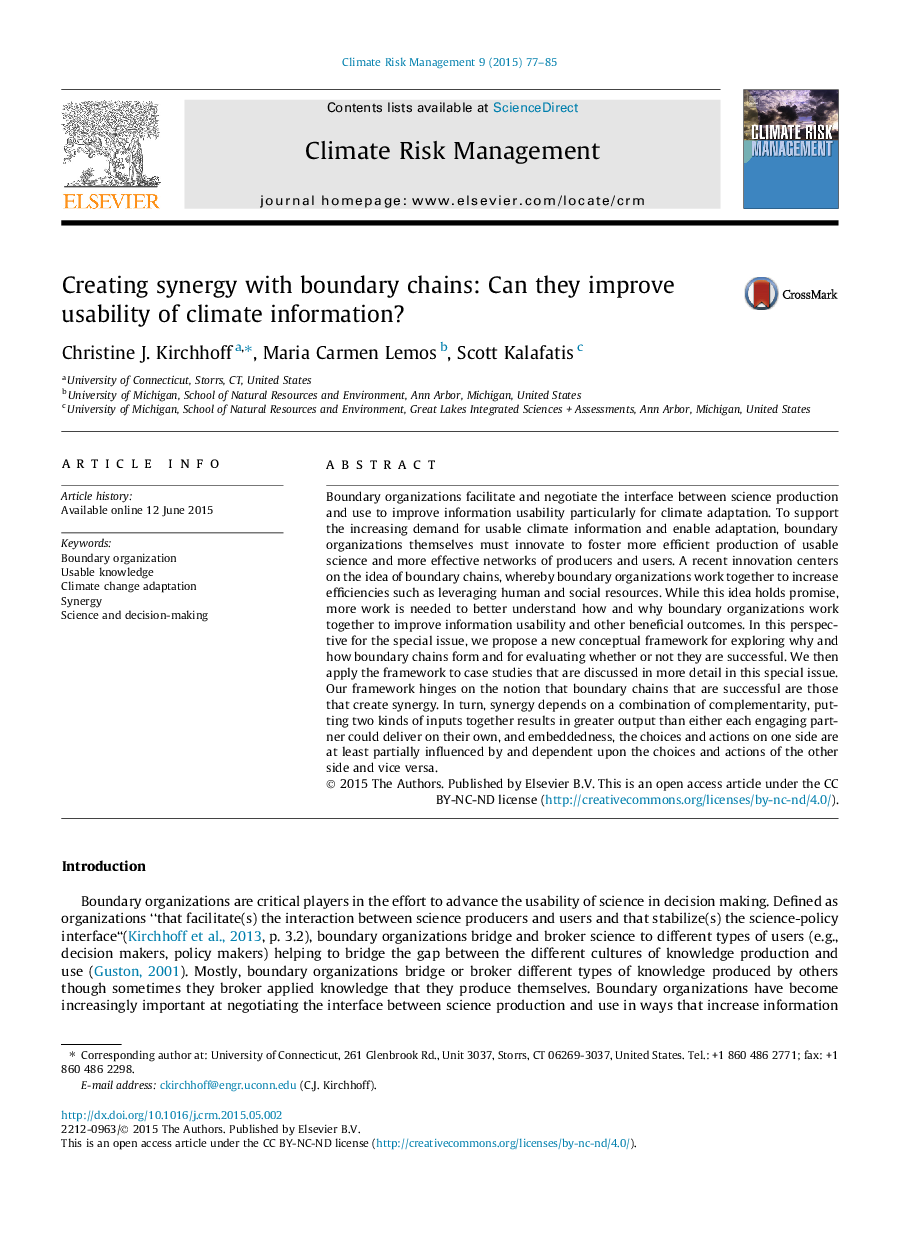| کد مقاله | کد نشریه | سال انتشار | مقاله انگلیسی | نسخه تمام متن |
|---|---|---|---|---|
| 1051257 | 1484883 | 2015 | 9 صفحه PDF | دانلود رایگان |
Boundary organizations facilitate and negotiate the interface between science production and use to improve information usability particularly for climate adaptation. To support the increasing demand for usable climate information and enable adaptation, boundary organizations themselves must innovate to foster more efficient production of usable science and more effective networks of producers and users. A recent innovation centers on the idea of boundary chains, whereby boundary organizations work together to increase efficiencies such as leveraging human and social resources. While this idea holds promise, more work is needed to better understand how and why boundary organizations work together to improve information usability and other beneficial outcomes. In this perspective for the special issue, we propose a new conceptual framework for exploring why and how boundary chains form and for evaluating whether or not they are successful. We then apply the framework to case studies that are discussed in more detail in this special issue. Our framework hinges on the notion that boundary chains that are successful are those that create synergy. In turn, synergy depends on a combination of complementarity, putting two kinds of inputs together results in greater output than either each engaging partner could deliver on their own, and embeddedness, the choices and actions on one side are at least partially influenced by and dependent upon the choices and actions of the other side and vice versa.
Journal: Climate Risk Management - Volume 9, 2015, Pages 77–85
